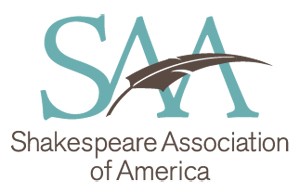CFP: The Sensorial Lives of the Nonhuman in Medieval and Early Modern English Literatures
(1300-1700)
International Conference at the Universities of Bern and Zurich, Switzerland
09.-11. September 2025
In the wake of new materialist theories, scholarship in sensory studies has paid increasing attention to the ways in which the nonhuman – animals, plants, objects – is entangled with human sensation. This conference explores the sensorial lives of the nonhuman itself as it is mediated in medieval and early modern literatures. We ask how literary as well as non-literary texts from various genres, ranging from the thirteenth to the seventeenth centuries, evoke and engage with forms of nonhuman sensation. What sensorial affordances do texts ascribe to the nonhuman, and what perceptual experiences do they imagine? In what ways do they shape or transform human sensory perceptions by attributing sensorial capacities to the non-human entities inhabiting the natural and supernatural worlds? How does the idea of a shared sensorial world stabilize or destabilize categories between the human and
nonhuman?
We invite papers which consider the following sensorial encounters between the nonhuman and the human in medieval and/or early modern texts:
I. Objects
– What kind of objects are presented as having sensorial lives in medieval and early modern texts?
– What are their sensorial affordances, and how do they cue human perception?
– To what extent are objects presented as co-agents in religious, social, and cultural practices? (e.g. food culture, love-tokens, liturgical and devotional objects, mnemonic objects)
II. Animals
– How do medieval and early modern literatures portray animals as sensorial creatures? Which of the senses are predominantly connected to animals and how?
– What are the similarities and differences between animal and human sensations?
How is human-animal communication facilitated by shared sensorial perception?
– How does the concept of superior sensation in animals shape human-animal encounters? Which animals were understood to possess outstanding sensory acuity, and how do such sensory superpowers in animals shape human-animal encounters?
– How are animals depicted as capable of suffering, and how do their sensorial lives invite empathy with the nonhuman?
III. The Natural World
– How do medieval and early modern literatures engage with the sensory affordances of plants and minerals in poetic and practical texts (e.g. recipe books, medical manuals)?
– What poetic or mythological model for hybrids of the human and nonhuman or metamorphoses from the human into the nonhuman existed in the medieval and early modern periods? How were such hybrid (trans)formations articulated in the register of sensory perception?
– How do medieval and early modern texts of various genres depict human
encounters with a natural world that is imagined as agential? How do dramatic weather conditions, floods, and earthquakes affect humans and nonhumans in these texts?
IV. The Supernatural
– Which aspects of the supernatural are characterized as being (in)accessible to human perception, and to what effect?
– How do medieval and early modern literary texts engage the senses in their creation of supernatural entities? Which sensory experiences are evoked in representations of the supernatural?
– How does the attribution of sensory qualities shape medieval and early modern discourses of the divine, the sacred, the marvellous, or the demonic?
We are planning to publish a volume of essays on the topic of the conference. Funding may be available for early career researchers (tbc).
Papers should be 25-30 minutes in length. We invite abstracts of approx. 250 words and a short bionote by 1 March 2025. Please send them to both conference organisers: karremann@es.uzh.ch and annette.kern-staehler@unibe.ch

